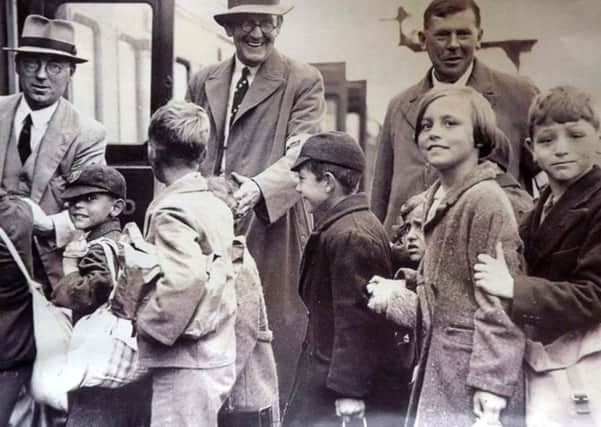Unhappy evacuee had a long walk back home


Ray Emery contacted me to say that although he was not in the photograph he, and his two sisters, were in another well-known photograph from the period.
Here we see the photo with Ray and his sisters boarding a train for Eastleigh in 1939.
Advertisement
Hide AdAdvertisement
Hide AdRay was aged nine at the time and in front of him can be seen his sister Vilma aged 10 and in front of her, looking a little vexed, is Marlene, aged six.
They all lived at 218, Twyford Avenue, Stamshaw and Ray told me his mother was very upset to see her three children being taken from her.
The three teachers to the rear are all from Stamshaw School and are, from left to right, Headmaster Mr Davis, Mr Farrow and Mr Knight.
The three children had to take a change of clothes and an enamel cup and plate.
Advertisement
Hide AdAdvertisement
Hide AdOn arriving at Eastleigh they went to live with a childless couple, a Mr and Mrs Tibbles. Mr Tibbles was a railwayman based at Eastleigh Works.
As this was the period of the ‘phoney war’ when nothing happened for months after war was declared, it was not long before Ray and Marlene came home, although Vilma remained at Eastleigh.
Some months later Ray was sent, along with many other Portsmouth children, to Petersfield where they all lived in a large house. Ray was not that happy there and so, with a few others boys, they bunked off and walked all the way home via Butser Hill. After that the three children found themselves near Basingstoke at a village called Sherborne St John, where they all lived on a farm for about 18 months.
‘We used to help out at harvest time, gathering the wheat and making it into stooks to stand in the fields for drying’, Ray told me.
Advertisement
Hide AdAdvertisement
Hide AdThe farmer and his wife, Mr and Mrs Allen, had two daughters who hit it off with Vilma and Marlene straight away and they all slept in the same bedroom.
After the war the families never lost touch and became great friends.
When Vilma had her 14th birthday she had to go to work and so everyone moved back to Portsmouth. Ray told me that in between the Eastleigh and Basingstoke adventures he was at home during the blitz and his father, who was a bus driver, used to load the family up in his bus and drive them ‘over the hill’ for safety.
Ray also told me of something I have never heard from anyone else when talking about the war in Portsmouth - smoke containers.
Advertisement
Hide AdAdvertisement
Hide AdThese were boxes placed on the corners of streets with a device inside that could be activated, surrounding the area in thick, dark smoke that was as high as the surrounding houses. It was meant to put German bombers high above the city off direction.
On leaving school in 1944, Ray went to work for De Havilland at the City Airport and later worked for Avery Hardoll in New Lane, Havant,
Sadly, he lost his wife Jean after 50 years of marriage a few years ago and he now lives in a care home in Drayton. He remains busy though, working for the League of Friends at Alexandra Hospital, Cosham.